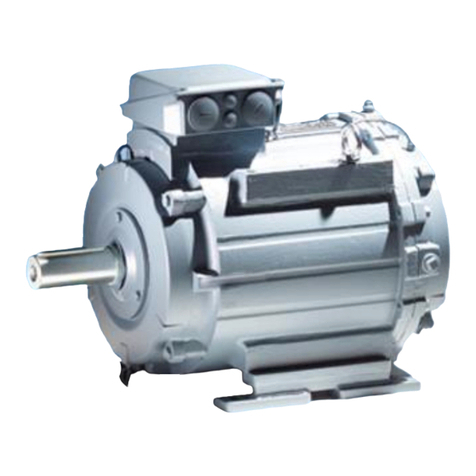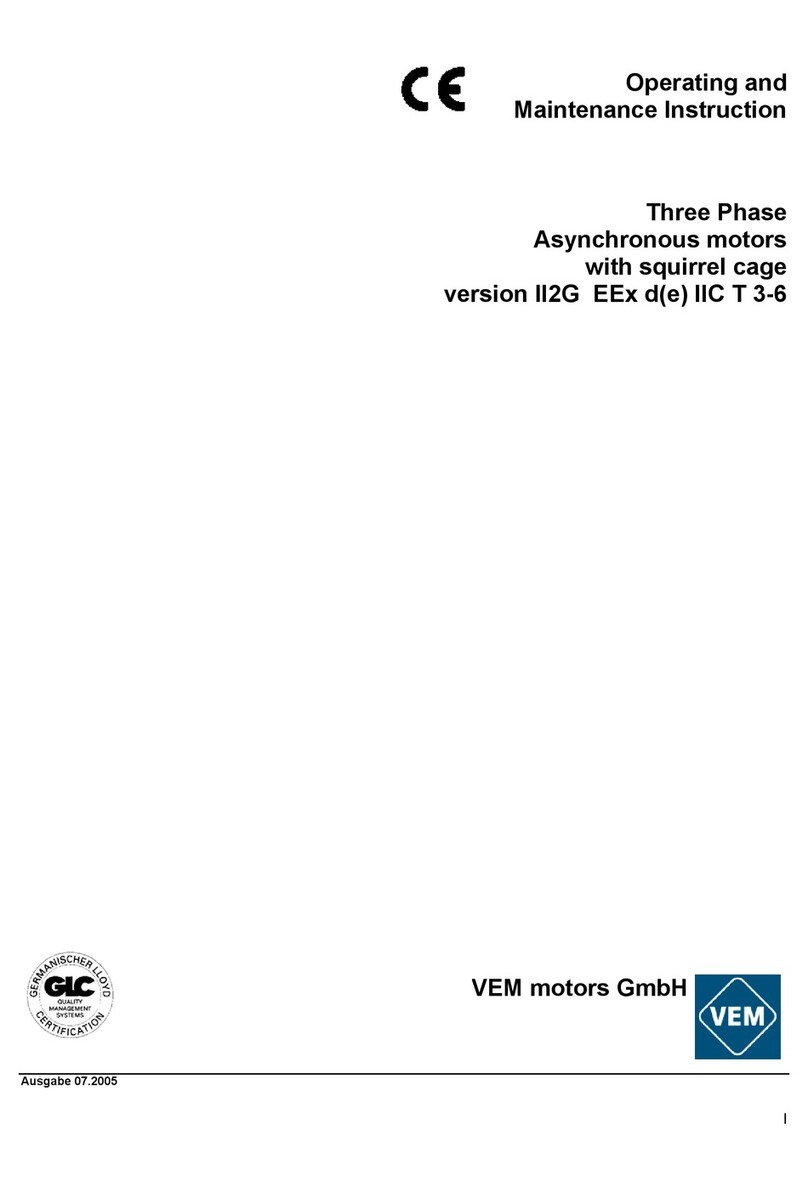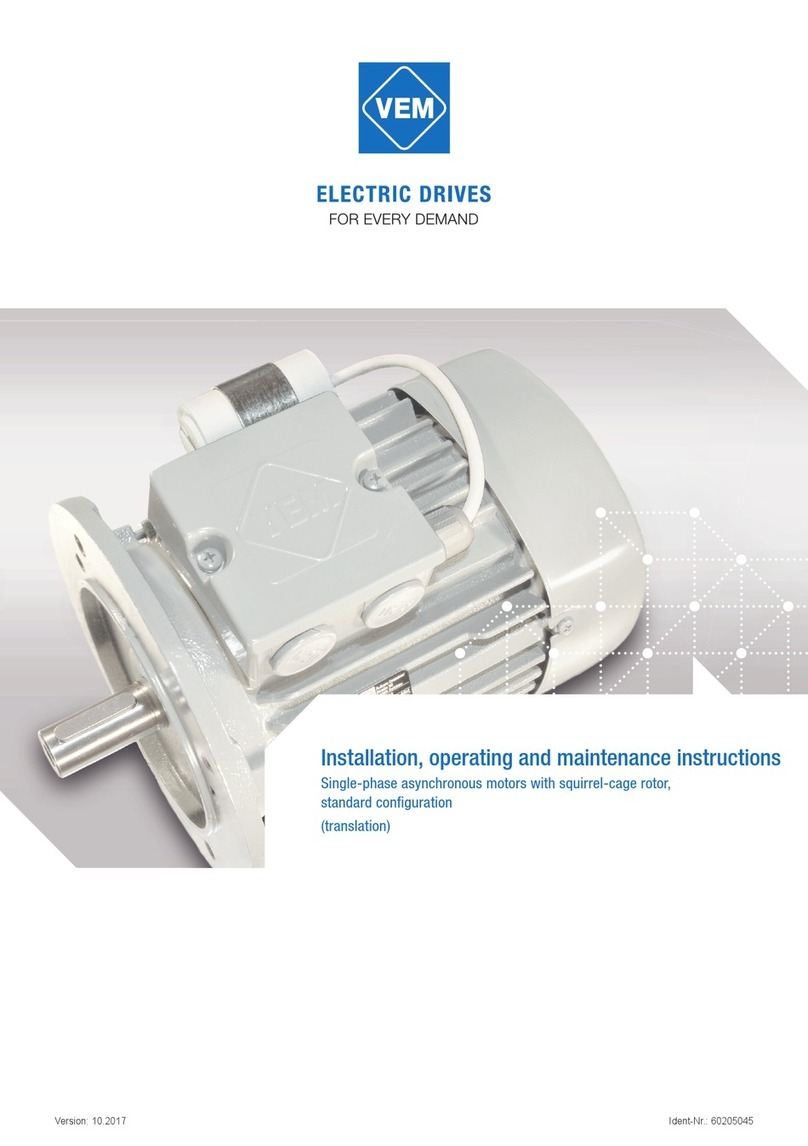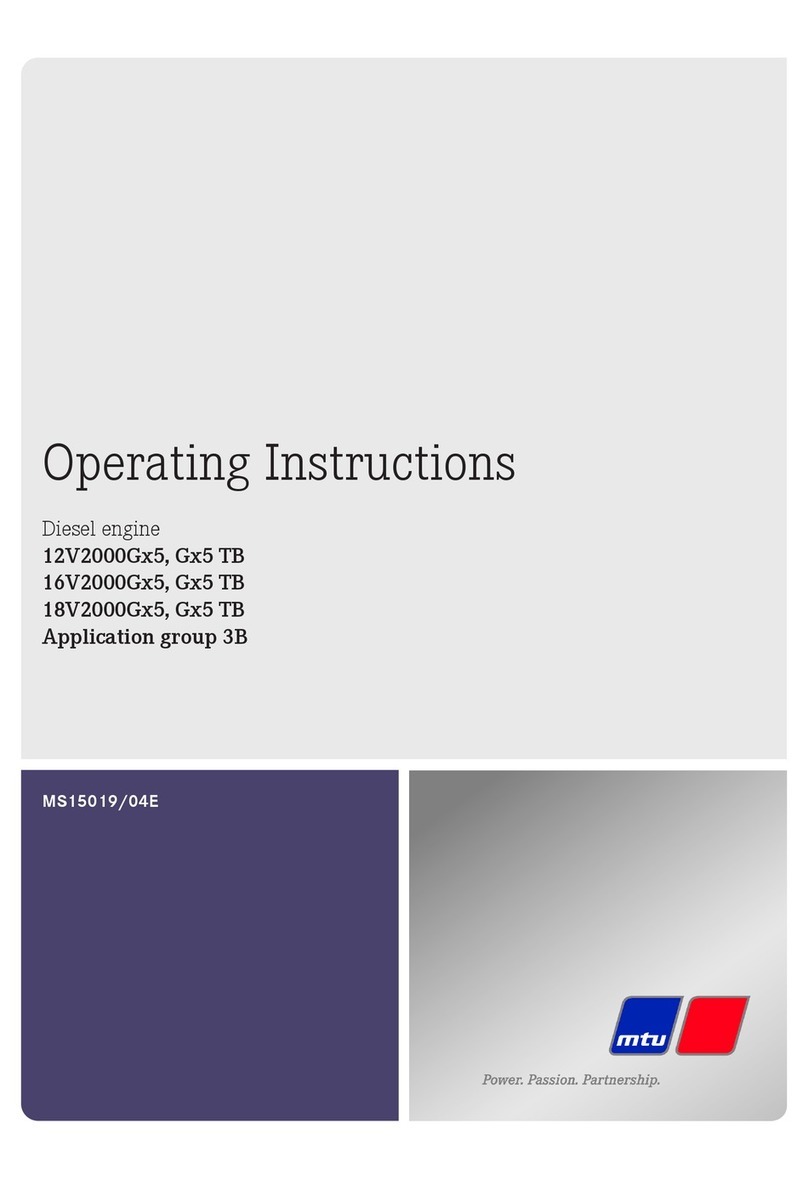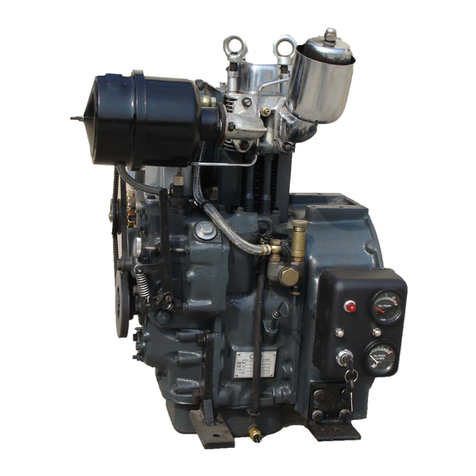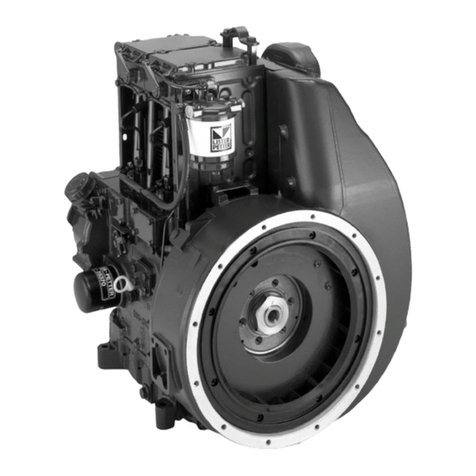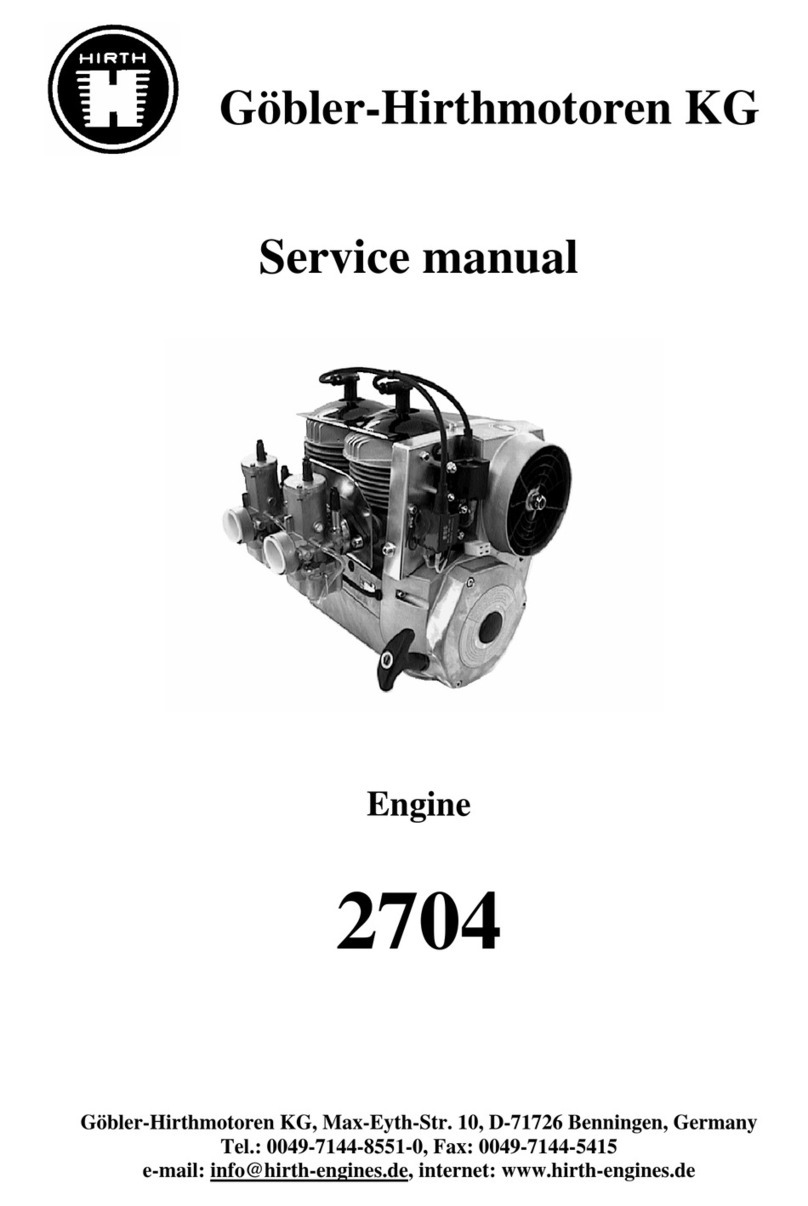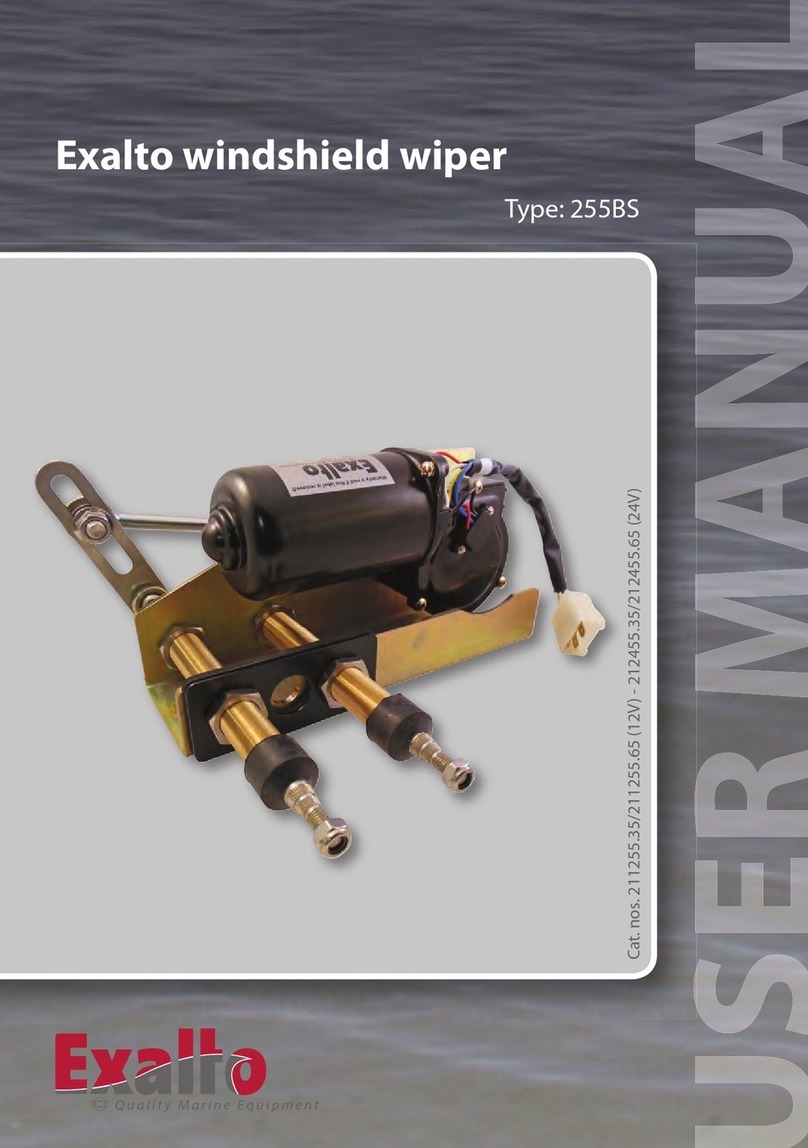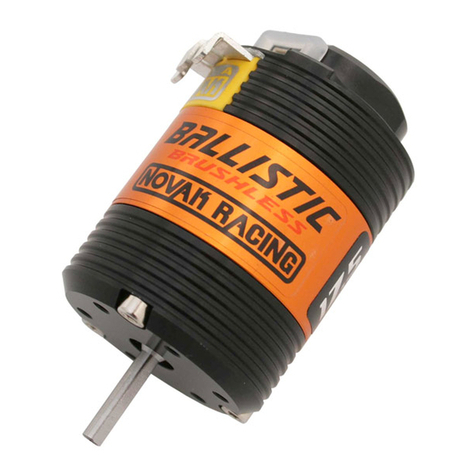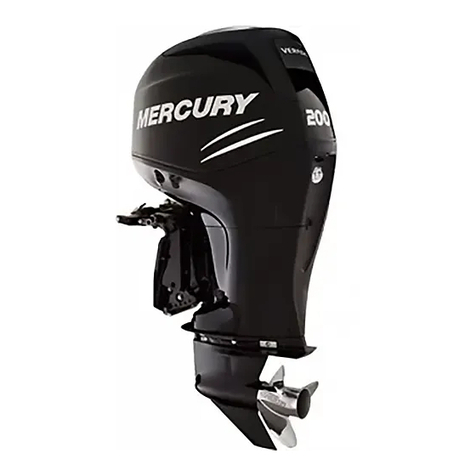Vemco K11 Series Manual

ATEX
ATEX
ATEX
Additional Installation, Operating and
Maintenance Instructions
Explosion-protected three-phase asynchronous motors with
squirrel-cage rotor for low voltage
Ident-Nr.: 50229 01Version: 08.2017

English
3208.2017 50229 01 50229 0108.2017
For energy-efcient design the mark IE*- is added to the
type designation, whereas *= 1, 2, 3 (acc. to IEC/EN 60034-30-1).
(Example IE3-K11R 132S 4 Ex e IIC T3).
Type of protection increased safety “e” (“eb”)
Type of protection “n” (increased safety “ec”)
Type of protection by enclosure “t”
Design series (IE*-)K... and (IE*-) “W..R”

3208.2017 50229 01 50229 0108.2017
General
Attention! Read installation, operation
and maintenance instructions, connection
diagram, additional connection diagram and
safety regulations before transportation, in-
stallation, start-up, maintenance and repair.
Mind the information!
The existing additional operation and maintenance
manual is valid together with the already mentioned
documents and the operation and maintenance manual
for standard motors, where the basic specications for
connection, installation, operation and maintenance as
well as the spare parts lists are included.
This manual shall help the user to ease the secure and
proper transportation, installation, start-up and mainte-
nance of the explosion-protected electric machine.
The compliance of this manual and the conditions and
methods for installation, operation, usage and mainte-
nance of the electric motor can not be controlled by the
manufacturer. An incorrect installation can result in dam-
age to property and thus can lead to risks for persons.
Therefore we do not assume responsibility and warranty
for losses, damages or costs resulting directly or indi-
rectly from incorrect installation, faulty operation or us-
age and maintenance. Technical drawings and pictures
are simplied illustrations. Due to improvements and
changes it might happen that they do not correspond
in detail with the supplied electric machine. Our policy
is one of constant product improvement. Therefore we
reserve the right to change the product, technical data
or installation, operating and maintenance instructions
without prior notice. Designs, technical data and illustra-
tions are not binding until conrmed in writing by the
supplier’s works.
Symbols
IIn this manual three symbols will be used, that indicate
important passages:
Security and warranty advices,
possible damage to persons included
Warning against electric voltage, danger of
life. Advice that damages to the electrical
machine and/or the auxiliary devices can
happen.
Additional advice for electrical Ex-motors of
Group II of category 2 (zone 1, 21) or Group II
of category 3 (zone 2, 22).
Security regulations
The security regulations, accident prevention regula-
tions, standards and approved rules of technique must
be observed unconditionally!
The non-observance of the security advices can
result in endangering people and/or damaging of
the machine.
Operation according to regulations
This manual is valid for explosion-protected, low voltage
electric machines. The type of protection according to
IEC/EN 60034, part 5 is at least IP 54 for motors for
operation in zones 1 and 2, at least IP 55 for operation
in zone 22 and IP 65 for operation in zones 21 and 22
with conducting dust.
For combinations always the highest required type of
protection has to be used. The type of protection is
always declared on the name plate of the motor.
In areas with risk of explosion only electric motors with
the permitted type of protection may be used.
Electric machines of Group II, category 2
(assigned to zones 1, 21) or Group II, cat-
egory 3 (assigned to zones: 2, 22)
Other or different operations are not classied in ac-
cordance to the regulations.
For damages and operational disturbances that results
from faults at installation, ignorance of this manual or
improper repair no warranty can be claimed.
Areas with risk of explosions
Which areas outdoors or indoors have to be considered
at risk of explosion according to the relevant rules and
regulations must be left at the responsibility of the op-
erator or the supervisory authority if there is any doubt
about the localisation of areas with risk of explosion.
The responsibilities for the operator of such plants
are described in the regulation 99/92/EG – ATEX 153
(former ATEX 118a and 137), occupational health and
safety regulation. The directive 2014/34/EU (RL94/9/
EC) contains the fundamentals for explosion-protected
products. The requirements for products for operation in
areas with risk of explosion are determined in this direc-
tive. They will be supported by corresponding regula-
tions (see below).
Explosion-protected electrical machines, that will be
covered by this manual, have been designed according
to the regulations of series IEC/EN 60034 (VDE 0530),
IEC/EN 60079-0, IEC/EN 61241-0 and the regulation for
the corresponding type of protection IEC/EN 60079-7,
IEC/EN 60079-15, IEC/EN 61241-1 and/or
IEC/EN 60079-31. They shall only be put into operation
according to the measures of the appropriate super-
visory authority.
Type of protection, temperature class and
characteristics have to be taken from the
name plate of the motor.
– Group II, category 2 (assigned zones: 1, 21)
In this category electrical machines of type of protection
increased safety “e” (“eb”) and ame-proof enclosure
“d/de” (“db”/ “db eb”) can be found. In addition electrical
machines for operation in areas with combustible dusts
and type of protection - protection by enclosure “tb” are
included in this group.
– Group II, category 3 (assigned zones: 2, 22)
In this category electrical machines with type of protec-
tion “n” (increased safety “ec”) and electrical machines
for operation in areas with combustible dusts and type
of protection - protection by enclosure “tc” can be found.
If the certication number includes the letter
X, special requirements have to be observed
that are listed in the corresponding type
examination certicate.

English
5
408.2017 50229 01
50229 0108.2017
Characterisation of explosion-protected motors
QS certi ciation with NB 0637 … IBExU Freiberg
Designation acc. to RL 2014/34/EU
(RL 94/9/EG) or ТП ТС 012/2011 Designation acc. to Designation acc. to
EU
EAC
No.
NB
Group/category/
G (Gas) or
D (Dust)
IEC 60079-0:2004/
EN 60079-0:2006
and/or
IEC 61241-0:2004/
EN 61241-0:2006
IEC 60079-0:2007/EN 60079-0:2009
or
IEC 60079-0:2011, modi ed
+ Cor.:2012 + Cor.:2013 /
EN 60079-0:2012/A11:2013
0637 II 2G
Ex e II T1/T2, T3 or T4 Ex e IIC T1/T2, T3 or T4 Gb or
Ex eb IIC T1/T2, T3 or T4 Gb
ГБ08 1
II 3G
Ex nA II T2, T3 or T4 Ex nA IIC T2, T3 or T4 Gc or
Ex ec IIC T2, T3 or T4 Gc
ГБ08 2
0637 II 2D
Ex tD A21 IP65 T125°C Ex tb IIIC Tx°C Db
ГБ08
II 3D Ex tD A22 IP55 Tx°C
(IP 65 conductive dust)
Ex tc IIIB Tx°C Dc
(Ex tc IIIC Tx°C Dc, conductive dust)
0637 II 2G
II 2D Ex e II T2, T3 or T4
Ex tD A21 IP65 Tx°C
Ex e IIC T1/T2, T3 or T4 Gb or
Ex eb IIC T1/T2, T3 or T4 Gb
Ex tb IIIC Tx°C Db
ГБ08 1
-
0637 II 2G
II 3D Ex e II T2, T3 or T4
Ex tD A22 IP55 Tx°C
(IP 65 conductive dust)
Ex e IIC T1/T2, T3 or T4 Gb or
Ex eb IIC T1/T2, T3 or T4 Gb
Ex tc IIIB Tx°C Dc
(Ex tc IIIC Tx°C Dc, conductive dust)
ГБ08 1
-
0637 II 3G
II 2D Ex nA II T2, T3 or T4
Ex tD A21 IP65 Tx°C
Ex nA IIC T2, T3 or T4 Gc or
Ex ec IIC T2, T3 or T4 Gc
Ex tb IIIC Tx°C Db
ГБ08 2
-
II 3G
II 3D Ex nA II T2, T3 or T4
Ex tD A22 IP55 Tx°C
(IP 65 conductive dust)
Ex nA IIC T2, T3 or T4 Gc or
Ex ec IIC T2, T3 or T4 Gc
Ex tc IIIB Tx°C Dc
(Ex tc IIIC Tx°C Dc, conductive dust)
ГБ08
[When indicating a maximum surface temperature: for zone 2 (gas):
total surface including rotor and windings; for zone 21, 22 (dust): outer surface (enclosure, shaft)!]
Motors with double identi cation are only
intended for use in gas or dust explosive
atmospheres. Use in hybrid mixtures must
be checked and approved separately.
Generally notes for operating motors driven by
frequency converters
Commissioning of explosion-proof asynchronous motors
driven by frequency converters is only allowed if the mo-
tors are specially designed, produced, tested, certi ed
and marked for this purpose. Especially attention has to
be payed to the notes of the producer. A suitable choice
of the frequency converter and/or the use of lters have
to secure that the maximum allowable pulse voltage at
the motor terminals will not be exceeded.
The following values of the maximum pulse voltage
have to keep according to series and options:
Series K11./K10./K12./K21./K20./K4.R/W.1R/W.2R
Size 56-132T1) Û ≤ 1000 V
Size 56-132T1) acc. to Sp.2945 Û ≤ 1350 V
Size 132 [K20. 112] up to 400 Û ≤ 1350 V
Series KU1./KU0./KU2./WU1R/WU2R2)
Size 56-132T1) acc. to Sp.9382 Û ≤ 1560 V
Size 132 [KU0. 112] up to 400 Û ≤ 1800 V
Series KV1./KV4./KV0./KV2./WV1R/WV2R2)
Size 132 [KV0., KV4. 112] up to 400 Û ≤ 2500 V
1) 132T… Size 132 produced by VEM motors Thurm GmbH
2)
The marking of the series K11./K10./K12./K21./K20./K4.R/
W.1R/W.2R with suf xed TU or TV is possible with certain
designs.
It has to be guaranteed that the supply voltage at the
motor terminals (keep into attention the voltage drop
over the used lters) in any case has to be equal to the
data at the name plate of the motor.
If the voltage at the terminals of the motor is smaller
than the rated voltage at the name plate because of
voltage drops at the frequency converter, the cables,
reactor coils or lters the rated frequency has to be
lowered in relation with the voltage drop. This measure
results in a smaller variable speed range.

5408.2017 50229 01 50229 0108.2017
The operation of the motor driven by a frequency
converter is only allowed within the operating points
at the name plate. Shorttime exceeding of the operating
current of the motor up to 1.5 times of the rated current
for maximum 1 minute is only allowed for every
10 minutes. The maximum speed or frequency of the
motor has never to be exceeded. The measurement of
the imbedded thermal protector of the windings has to
keep the requirements of Declaration 2014/34/EU and
the concerning protecting unit must fulll Exdescription
II (2) G. Multi-motor operation is not allowed.
For installation and commissioning of the frequency
converter concerning notes and the operating manual
of the producer have to be payed in attention. The
switching frequency of the converter shall be setup
higher than the minimum value which is written at the
name plate.
Equipment of Category 2 driven by frequency
converter
For the type of ignition protection increased safety “e”
(new: “eb”) (EPL Gb) as well as protection by enclosure
“tb” (EPL Db) there are special EC-type examination
certicates necessary which explicitly approve the
operation at a frequency converter.
The required conditions and setups of the system
consist of motor, frequency converter and protecting
apparatus are described within the concerning EC-type
examination certicates, the EU Declarations of Confor-
mity, the nameplate and the data sheets.
Equipment of Category 3 driven by frequency
converter
For the type of ignition protection “n” (new: increased
safety “ec”) (EPL Gc) as well as protection by enclosure
“tc” has to be made so that motors driven by frequency
converter with variable speed and/or variable voltage
must be tested with a dened frequency converter or a
similar frequency converter according the specication
of output voltage and current.
Alternatively the thermal class may be dened by cal-
culation. The necessary parameters and conditions are
written at the name plate and within the documentations
of the motor.
Electromagnetic Compatibility
When the motor is operated in connection with a
frequency inverter, in particular with builtin thermistors
and other sensors, it is possible that emitted interfe-
rence occurs depending on the type of inverter. It
must be avoided to exceed the limit values given in
IEC/EN 61000-6-3 for the drive system consisting of
motor and inverter. Please observe the EMV directions
of the inverter manufacturer under all circumstances.
Efciency classes
The specication of the efciency class (IE class) ac-
cording to IEC/EN 60034-30-1 is allowed for explosion
protected motors. Indicated are IE class and rated
efciency. The determination of the motor efciency is
done with direct measurement complying with IEC/EN
60034-2-1 for motors up to 1 kW (chapter 8.1.1) and
with the summation of losses method and determination
of residual losses for motors > 1kW (chapter 8.2.2.5.1).
The type designation is extended with a prex (example
IE3-K11R 132 S4…).
Installation and electrical connection
At installation and start of operation the security advices
that are enclosed with the motor have to be observed.
Installation work shall only be done by qualied per-
sonnel who is skilled because of a technical education,
expertise and schooling of knowledge about
– security regulations,
– accident prevention regulations,
– standards and approved rules of
technique (for example VDE-regulations,
standards).
The qualied personnel must have the ability to assess
the assigned job, identify possible dangers and avoid
them. The qualied personnel must be authorized by
the person in charge for security of the plant to carry out
the necessary work and tasks.
Installing electrical equipment in hazardous areas requi-
res, inter alia to observe the following rules in Germany:
– BetrSichV
”Operational Safety Act”,
– TRBS
“Technical rules for industrial safety”
– GefStoffV
”Hazardous Goods Regulations”
– IEC/EN 60079-14
”Explosive atmospheres - Part 14:
Electrical installations design,
selection and erection”
Outside of Germany the correct national regulations
have to be observed.
Non-ventilated motors without self-ventilation are cooled
by free convection with rib cooling at the motor housing.
Unacceptable warming is avoided by reducing the
output/winding design and this is checked with type tes-
ting and certication. To ensure the selected tempera-
ture class is kept at all times, please always ensure free
convection. The motor must not be encased.
Environmental effects
The permissible coolant temperature (room temperature
at place of installation) according to IEC/EN 60034-1
is max. 40°C/min. –20°C without labelling and the
permissible altitude of site is up to 1000 m above sea
level (other than the given values have to be specied
on the name plate of the motor and must be certied
separately if necessary). It should be noted that the
cooling air can ow freely through the air inlet openings
and through the air outlet openings freely and can not
be sucked back directly. Inlet and outlet openings have
to be protected against pollution and dirt particles. The
direct intake of discharged air from neighbouring ag-
gregates must be prevented by suitable measures. The
minimum distance of air inlet of the fan cover against
any obstacles (dimension BI) has to be observed under
all circumstances.

English
7608.2017 50229 01 50229 0108.2017
It must be prohibited that foreign particles and liquids
can fall into the fan of motors with vertical shaft orienta-
tion. This shall be done as follows:
Shaft end directed downwards:
The protection cover of the fan is equipped with a
protective roof (supplied condition). Alternatively, the
operator can implement the protection against ingress
of foreign bodies and liquids.
Shaft end directed upwards:
For type of constructions with shaft end upwards the
operator has to ensure that no foreign substances can
fall inside from above. For shaft ends directed upwards
it must be prohibited that water or other liquids can
penetrate into the motor next to the shaft.
During installation of surface cooled motors it has to be
observed that the condensate drain holes are located at
the lowest possible place. If the condensate drain holes
are closed, the screws must be reinserted with a sealant
after drainage of condensation water. If the condensate
drain holes are open, the direct contact with a jet or
gush of water must be avoided. A careful installation
of the motors on an exactly level support has to be
ensured to avoid strain when tightening the machine.
Machines that shall be coupled must be adjusted exact-
ly. If possible elastic couplings shall be used.
Motor connection
The connection has to be done by qualied per-
sonnel according to the valid security regulations.
Outside of Germany the required national standards
must be applied. Name plate designations have to
be observed under all circumstances!
Compare current type, mains voltage and
frequency!
Mind connection type!
Mind rated current for motor protection
switch setting!
For motors with type of protection increased
safety „e“ (“eb”) the tE-time and the relative
starting current IA/INhas to be observed!
Connect the motor according to the connec-
tion diagram inside of the terminal box!
Earthing shall be done with the earthing clip that can be
found at the enclosure or at the end shield depending
on the type of construction. In addition all motors are
equipped with a ground conductor clamp inside of
the terminal box. Unused cable glands of the terminal
box have to be closed for protection against dust and
humidity. For electrical connection the standard security
and starting instructions are valid. The cable glands
or screwed sealing plugs must be admitted for use in
Exapplications. The installation torques, sealing areas
and clamp ranges of the cable clamps given by the
manufacturer have to be observed unconditionally.
Supply cables have to be selected according to
DIN VDE 0100 taking into account rated current and
operational conditions (i.e. ambient temperature, me-
thod of cable installation etc. complying with
DIN VDE 0298 and IEC/EN 60204-1).
For room temperatures of more than 40°C
cables have to be used, that are allowed for
an operation of at least 90°C. This is also
valid for motors that are marked with X on
the supplemental sheet of the EC-type
examination certicate which indicates
special requirements for the cable design.
Take extra care when connecting the supply cables in
the terminal box of the motor. The nuts of the connec-
tion screws have to be fastened without force.
For motors with a terminal board tted with slotted bolts
according to directive 2014/34/EU (RL94/9/EC) only
cable lugs complying with DIN 46295 shall be used. The
cable lugs are xed with pressure nuts with integrated
spring washer. Alternatively a solid round wire can be
used. The diameter of the wire must be suitable for
the slot width of the slotted bolt. When inserting the
feed line in the terminal box it has to be secured that
no tensile loading acts on the cables. The inside of the
terminal box must be kept clean. The seals must be un-
damaged and have to be tting. The terminal box must
always be closed when the motor is in operation.
Attention, do not open terminal boxes in
atmospheres with risk of dust explosions
when they are still hot from operation!
On order type AK 16/5 can be delivered as additional
separate terminal box for motors (IE.-)KPR/KPER 56 -
132S..T. The installer must have the permission to ins-
tall electric equipment in areas with risks of explosions
and must implement the motor connection diagrams.
The creepage distances and air gaps are kept by
preassembly of the terminal board (connection plate)
and the block for connecting PTC thermistors or anti
condensation heating. The type of protection IP 55(66)
is kept by using a closed base plate with 4 x M4 threads
and dimensions 56 x 56, as well as the included seals
and standard parts.
Size Bl [mm]
63, 71 14
80, 90 16
100, 112 20
132, 160, 180, 200 40
225, 250 90
280 … 315 100
355 110
400 110

7608.2017 50229 01 50229 0108.2017
Terminal box overview
Terminal
box type Terminal board
IB max QBmin QBmax Terminal type Connecting
thread
a
[A] [mm2] [mm2] [mm]
KA 05-13 KB 5580 27.5 2.5 U-clamp terminal M4
25 A KB 3Ex (KS 10A) 53 610 slot terminal S10 x 1 4.3 ± 0.1
63 A KB 4Ex (KS 14A) 72 10 16 slot terminal S14 x 1.25 6.3 ± 0.2
100 A KB 4Ex (KS 14A) 72 10 16 slot terminal S14 x 1.25 6.3 ± 0.2
200 A KB 5Ex (KS 18A) 118 25 35 slot terminal S18 x 1.5 9.2 ± 0.2
25 AV KL 155 30 4 U-clamp terminal M5 -
25 AV KB 5590Ex/d 5,2 35 4 U-clamp terminal M4 -
63 AV KB 5121Ex-3 58.5 10 U-clamp terminal M5 -
100 AV KB 5121Ex-3 58.5 10 U-clamp terminal M5 -
100 AV KB 5130Ex 114 35 U-clamp terminal M6 -
200 AV KB 5130Ex 114 35 U-clamp terminal M6 -
100/63 AV KM 8/6, VEM 8/6 63 10 Stud/U-clamp terminal*) M6/M5 -
200 A-SB KM 10/8, VEM 10/8 100 70 Stud/saddle terminal M8/ 2 x M6 -
KB 5130 Ex 118 35 U-clamp terminal M6 -
400 AV KM 10/8, VEM 10/8 100 70 Stud/saddle terminal M8/2 x M6 -
400 A-SB KM 10/8, VEM 10/8 100 70 Stud/saddle terminal M8/2 x M6 -
KM 16/12, VEM 16/12 250 120 M12/2 x M10
630 A VEM KLP 630-16 455 35 300 Stud/screw terminal M16M12/M8 -
1000 A VEM KLP 1000 1000 70 2 x 240 Current rail M10 -
K1X 200 A KM 10/8, VEM 10/8 100 70 Stud/saddle terminal M8/2 x M6 -
K2X 200 A KM 10/8, VEM 10/8 100 70 Stud/saddle terminal M8/2 x M6 -
K1X 400 A KM 16/12, VEM 16/12 250 120 Stud/saddle terminal M12/2 x M10 -
K2X 400 A KM 16/12, VEM 16/12 250 120 Stud/saddle terminal M12/2 x M10 -
IB max max. rated current
QBmin / QBmax max. rated crosssection
a slot width of the slotted bolt (terminal board according to DIN 22412)
MAnzug max. tightening torque for connecting thread
*) for single-core connection of solid conductors 6…10 mm2, connector formed as loop
Thread Ø S10x1 S14x1,25 S18x1,5 M4 M5 M6 M8 M10 M12 M16 M20
Terminal board (Motor) - - - 1.5 2.5 47.5 12.5 - 15 -
Terminal stud 6 10 20 1.2 1.2 3 610 15.5 30 52
Screw terminal 7.5 20
U-clamp terminal/
saddle terminal - - - 1.2 1.2 3 - 10 - - -
Seal for terminal box
Seal Permitted coolant temperature
Surface seal, silicon red, 3 mm thick
-40°CSilicone foam Ø 8 mm white
EPDM E 9566, 3 mm thick *)
EPDM, black, 3 mm thick -30°C
*) only terminal box KA 05-13
Axial shaft gasket
Series (IE.-)K1.R 112 up to 400, (IE.-)W.1R 112 up to 315, (IE.-)W.2R 400
Seal material Permitted minimum coolant temperature
FPM 80, FKM -25°C
Silicone -30°C
Tightening torques for connections (DIN 46200)

English
9808.2017 50229 01 50229 0108.2017
Tightening torques for bolts (terminal box, end shield, bearing cover)
Series (IE.-)K1.R 112 up to 400, (IE.-)W.1R 112 up to 315, (IE.-)W.2R 400
Thread Ø M5 M6 M8 M10 M12 M16 M20
End shield - - 25 45 75 170 275
Bearing cover 5 8 15 20 20 - -
Terminal box -47.5 12.5 - 20 -
Tightening torques for bolts (terminal box, end shield, bearing cover)
Series (IE.-)KPER/O 63 to 132T, (IE.-)KPR/O 56 to 100
Type Type of
construction End shield Fixed bearing cover Terminal box
(IE.-)KPER/O (IE.-)KPR/O DS NS DS NS or
adapter cover
bolts/tightening torque for bolts MA
63… 56…
all
M 4
2.0 Nm
M 4
2.0 Nm
M 4
1.5 Nm
(for (IE.-)
KPR/O
100 L
M 5
2.0 Nm)
M 4
1.5 Nm
M 4
2.5 Nm
M 5
1.0 Nm
71… 63…
80… 71… M 5
4.0 Nm
M 5
4.0 Nm
90… 80…
100 L 90… M 6
7.0 Nm
M 6
7.0 Nm
100 LX,112… 100…
B3 M 8
10.0 Nm
M 8
10.0 Nm
M 5
2.0 Nm
M 5
2.0 Nm
B5, B14 M 8
15.0 Nm
132 S…T -
B3, B14-
FT130
M 8
10.0 Nm
B5, B14 M 8
15.0 Nm
M 4
2.0 Nm
Axial shaft gasket
Series (IE.-)KPER/O 63 to 132T, (IE.-)KPR/O 56 to 100
Seal material Permitted minimum coolant temperature
FKM -20°C
Motors with type of protection increased safety “e”
(“eb”) and with outgoing cable (including the design
version with at terminal box with separate certi-
cate according to directive 2014/34/EU (RL94/9/EC)
The outgoing cable is led through with 4 or 7 conductors
according to the demands of the customer.
If the entire terminal box is delivered and the connec-
tion is done in an Exeprotected surrounding, than the
following instructions have to be observed:
1. When mounting the terminal box at least the require-
ments for type of protection IP 54 must be fullled.
2. For compliance with the required clearances the
terminal socket has to be fastened according to the
indicated drawing of holes.
3. The inner earth conductor from the motor (green/
yellow) with crimped lug has to be placed under the
clamping yoke of the earth connection.
4. The outgoing cables of the motor have to be soldered
into the angled lugs of the terminal socket. The correct
connection U1, V1, W1 (U2, V2, W2) has to be
observed.
When mounting the aggregate please take note that
the motor number on the name plate agrees comple-
tely with the number on the riveted plate inside of the
terminal box cover.
Protective measures against unacceptable warming
If there is no other information on the type examination
certicate or on the name plate concerning duty type
and tolerances, electrical machines are designed for
continuous duty and normal, not frequently recurring
starts, at which no signicant warming occur. The mo-
tors shall only be operated in the duty type indicated on
the name plate. If no specication of duty type is done
on the name plate, the motors must only be operated in
continuous duty S1.
The range A of the voltage and frequency limits of
IEC/EN 60034-1 (DIN VDE 0530, part 1) – voltage
± 5 %, frequency ± 2 %, shape of curve, mains symme-
try – has to be observed, so that the warming is kept
within the permissible limits. Motors for area B of the
voltage limits are marked separately on the rating plate.
Bigger deviations from design values can result in ex-
cess warming of the electrical machine to unacceptable
temperatures. These deviations have to be indicated
on the name plate. The motor has to be protected
against unacceptable warming at starting for example
with a motor protection switch. That means a current-
dependent delayed protection switch according to
DIN VDE 0660 or a similar device for all phases has to
be installed, so that unacceptable warming is prevented.
The protective device must be adjusted to the rated
current. Windings in deltaconnection have to be pro

9808.2017 50229 01 50229 0108.2017
tected by connecting the release or relay in series with
the phase windings. Selection and adjustment of the
releases must be based on the rated value of the phase
current (x0.58 rated current of the motor). If such a
connection is not possible, suitable protection switches
must be used, for example with phase failure control.
For polechanging motors current-dependent delayed re-
leases or relays have to be provided for each rotational
speed level that can be locked against each other.
For type of protection increased safety “e”
(“eb”) the starting will be controlled as well.
Therefore the protection device must switch
off within the time period tEthat is given for
the corresponding temperature class when
the rotor is blocked. The requirement is
fullled if the release time (it can be taken
from the release characteristics (starting
temperature 20°C) for the ratio IA/IN) is not
higher than the indicated tEtime.
Electrical machines of type of protection increased
safety “e” (“eb”) for heavy starting (start-up time >
1,7 x tE time) must be protected by a starting control
according to the information of the certicate of confor-
mity. They have to be certied accordingly.
Thermal motor protection by means of direct
temperature monitoring of the winding is
permissible if this is certied and indicated
on the name plate. The protection consists
of thermo couples according to DIN 44081/
44082 that ensures explosion protection
together with a tripping device with type of
protection marking II (2) G. For pole-
changing motors it is necessary to have
separate protection devices for each rotation
speed level, that can be locked against each
other.
Auxiliary devices
Explosion-protected motors can be equipped with diffe-
rent auxiliary devices as option:
Additional thermal motor protection
For monitoring the stator winding temperature it is pos-
sible to have thermo couples installed in the motor (PTC
thermistors, KTY or PT100). For their connection suita-
ble auxiliary clamps for auxiliary circuits are available
in the main terminal box or in additional terminal boxes.
The connection is done according to the attached
connection diagram.
Thermal motor protection as inherent protection
The use of thermal winding protection as inherent motor
protection is only permissible if the operation is tested
separately and certied by a notied body. On the name
plate instead of the tEtime a tA time is marked.
In addition the following text will be printed on the name
plate: “operation only with tested PTC tripping device
and marking II (2) G”.
“Do only operate with approved PTC-Ther-
mistor-Relays with indication II (2) G”.
Anti-condensation heating
The heating tapes must comply with the directive
2014/34/EU (RL94/9/EC). The heating power and the
input supply voltage are indicated on the name plate
of the motor. For their connection either in the main
terminal box or in the auxiliary terminal boxes suitable
clamps for auxiliary circuits are provided. The connec-
tion is done according to the attached connection dia-
gram. The anti-condensation heating has to be switched
on only after disconnection of the motor. It shall not be
switched on while the motor is in operation.
Forced ventilation unit
The fans must comply with the directive 2014/34/EU
(RL94/9/EC). The forced ventilation unit is dissipating
the lost heat at operation of the main motor. During
operation of the main motor the motor of the forced
ventilation unit has to be switched on. After discon-
nection of the main motor the forced ventilation has to
continue depending on the temperature. For motors with
forced ventilation units that are dependent of the sense
of rotation, the sense of rotation has to be observed
unconditionally (see rotation mark). Only manufacturer
approved forced ventilation units shall be used. The
forced ventilation unit has to be connected according
to the connection diagram that is supplied inside of the
terminal box.
Special design for terminal box on N-side
The terminal box for this special design is located on
N-side of the motor before the fan cover. To realise this
design the stator housing was turned during production.
Special marking for type designation:
KNS… for sizes 56 to 132..T
(VEM motors Thurm GmbH)
KN … for sizes 112 to 400 (VEM motors GmbH)
For motors of category 2 a special approval is neces-
sary.
Fitting with RFID transponder (Memory motor)
As option it is possible to equip the motor with an RFID
transponder (TAG). This feature is called memory motor,
marked with “MM” according to factory standard
EW-N 1002, page 13. The transponder D14-TAGspecial
ATEX (RFID System iID®2000, 13.56 MHz based on
ISO 15693 is used.
The reading of the data may be carried out in
areas with an explosive atmosphere only
with a reader approved in accordance with
Directive RL 2014/34/EU (Directive 94/9/EC).
External heat and cooling sources
No extra measures will be necessary for existing exter-
nal heat and cooling sources, if the temperatures at the
installation site are not exceeded. If the temperatures
are exceeded or impacts on operational temperatures
or maximum surface temperatures can be expected
provisions will have to be made to maintain and conrm
explosion protection. If in doubt please contact the
manufacturer.

English
111008.2017 50229 01 50229 0108.2017
Maintenance and repair
In Germany maintenance, repair and changes of
explosion-protected machines have to be done taking
the workplace safety ordinance (BetrSichV), the explosi-
on protection ordinance (ExVO,11.GSGV), the security
advices and the description of the general maintenance
manual into account.
Outside of Germany the required national standards
must be applied.
More information about testing and maintenance of
electrical systems or repair and reconditioning of elec-
tric equipment can be found in IEC/EN 60079-17 and
IEC/EN 60079-19. Activities that will inuence the
explosion protection such as:
– repair of the stator winding and of the terminals,
– repair of the ventilation system
– repair of the bearings and of the sealing of dust explo-
sion protected motors (Ex 2D, 3D).
This must only be done by VEM service personnel or by
authorized workshops with trained personnel which is
qualied for such tasks by industrial training, experience
and special schooling.
For dust explosion-protected motors the dust explosion
protection is depending very much on the local environ-
mental conditions. For that reason the motors have to
be checked and maintained regularly.
Thick layers of dust will result in a tempera-
ture rise on the surface of the motor due to
thermal insulation. Layers of dust on the
motors or even the total coverage should be
avoided as far as possible by suitable
installation and constant maintenance.
The indicated surface temperature of the motor is only
valid, if the dust layer on the motor is max. 5 mm. The
securing of these conditions (dust type, maximum layer
thickness and other) has to be assured. The motor shall
not be opened before a suitable time has passed to re-
duce the inner temperatures to values that are not igni-
table. If the motors have to be opened for maintenance
or repair, the work has to be done in a dust-free room if
possible. If this is not possible suitable measures have
to be taken to prohibit that dust can collect inside of
the enclosure. At disassembly take extra care that the
sealing parts like sealing, end faces and other are not
damaged.
Careful and regular maintenance, inspections and
revisions are necessary to detect and clear faults in
time, before consequential damages will happen. As
individual operating conditions can not be dened for all
applications the listed terms represent a general advice
for undisturbed operation. Individual local conditions
(degree of pollution, load, etc.) must be taken into
account when adjusting these terms. The advices within
the standards EN 60079-17 and EN 60079-19 have to
be considered as well.
Inadmissible deviations detected during
the inspections have to be eliminated imme-
diately.
What to do? Time Periode Terms
First inspection After about 500 operating hours ½ year at the latest
Control of air circulation and
surface of motor Depending on local environmental pollution
Relubrication (as option) See name plate or relubrication sign
Main inspection After about 8,000 operating hours Once a year
Remove condensate water Depending on the local environmental
conditions
First Inspection
An initial inspection of the motor must be organized
after approximately 500 hours of operation, but not later
Measure During
operation
At
standstill
Check of the electric characteristics X
Check of the running noises. When the motor is running, it is checked if the quiet running
has changed for the worse. X
Check of the bearing temperatures. It is examined if the permissible bearing temperatures
will not be exceeded during operation of the motor. X
Check the intakes of the cooling air. There must be no damages. X X
Check of the foundations. There must be no cracks or other damages like depressions. X X
Check of the fastening bolts. All bolts used for xing mechanical and electrical connections
must be tight with the required torque. X
than half a year after start of operation. The following
examinations will be done at the motor:

111008.2017 50229 01 50229 0108.2017
Main Inspection
The main inspection of the motor must be organized
annually after approximately 8,000 hours of operation.
The following examinations will be done at the motor:
Measure During
operation
At
standstill
Check of the electric characteristics X
Check of the running noises. When the motor is running, it is checked if the quiet running
has changed for the worse. X
Check of the bearing temperatures. It is examined if the permissible bearing temperatures
will be exceeded during operation of the motor. X
Check the intakes of the cooling air. There must be no damages. X X
Check of the foundations. There must be no cracks or other damages like depressions. X X
Check of the motor alignment. The motor alignment must be within the given tolerances. X
Check of the fastening bolts. All bolts used for xing mechanical and electrical connections
must be tight with the required torque. X
Check of the insulation resistance. The insulation resistance of the winding must be sufciently high,
according to the requirements in the maintenance manual. X
Check of the potential, the earth and the shield connections. The examination must check if the
cables and used insulation materials are in good conditions. They must not be broken, cracked
or faulty in any other way.
X
Check the cleanness oft he surface of the motor and examine that the dust depositions are not
higher than 5mm. X
Inspection at faults
Extraordinary operating conditions like overload or short
circuit are faults which overload the motor in electrical
and/or mechanical kind. Even natural disasters may
be a cause for extraordinary operating conditions and
faults. After all such events main inspections have to be
carried out immediately.
The necessary relubrication intervals for
anti-friction bearings are different to these
inspection intervals. They have to be ob-
served as well!
The motors up to size 315M are equipped as standard
with anti-friction bearings with life-time lubrication. From
size 315MX upwards they are equipped with relubrica-
tion devices which can be ordered for smaller motors as
option. Information about bearings and relubrication can
be found in the general installation, maintenance and
operation manual or on the name plate or relubrication
sign.
Maintenance works (without relubrication)
has to be done at standstill of the motor.
It has to be assured that the machine is
secured against reconnection and labelled
with an appropriate sign.
In addition the security advices and accident prevention
regulations of the manufacturers for the use of oils,
lubricants and detergents has to be observed!
Adjacent live parts have to be covered or secured! It
has to be assured that the auxiliary circuits like anti-
condensation heating are dead (zero potential).
For design versions with condensate drain hole please
observe that the drain plug screw has to be lubricated
with a suitable sealant (for example Epple 28) before
relocking.
The work has to be marked with an additional repair
sign including the following information:
– date,
– executive company,
– if necessary type of repair,
– if necessary marking of the person legally authorised
in accordance with the BetrSichV.
If the operations are not done by the manu-
facturer, they must be approved by a person
legally authorised in accordance with the
BetrSichV. He has to issue a written conr-
mation or mark the machine with his test
mark. Outside of Germany the relevant state
regulations have to be observed.
Painting and impregnation after repair or
maintenance work
After repainting of explosion-protected
motors or after impregnation of a complete
stator that has been rewinded, bigger layers
of paint or resin can be found on the surface
of the motors. (This can result in electro-
static charges with risk of explosion during
discharge). Nearby charging processes can
also result in electrostatic charge of com-
plete surfaces or parts of the surface. There
is the risk of explosion due to discharge.
Therefore the requirements according to
IEC/EN 60079-0: Equipment - General re-
quirements, article 7.4 and TRBS 2153 must
be observed under all circumstances:

English
131208.2017 50229 01 50229 0108.2017
Limitation of the total thickness of paint or insulation
layer depending on the individual explosion group:
– IIA, IIB: Total layer thickness ≤ 2 mm
– IIC: Total layer thickness ≤ 0,2 mm
Limitation of the surface resistance of the used paint or
resin to:
– IIA, IIB, IIC, III surface resistance ≤ 1GΩ for motors of
group II and group III
Breakdown voltage ≤ 4 kV for explosion group III (only
dust, measured according to the method described
in IEC 60243-1 for thickness of insulation material).
In addition the specications of IEC/EN 60079-32
Electrostatic risks, especially annex A: Basics of static
electricity, annex B: Electrostatic discharges in special
situations and annex C: Combustibility of materials
should be observed.
Spare parts
Except for standard, commercially available
and equivalent parts (like anti-friction bear-
ings) only original spare parts (see spare
parts list) shall be used; this applies espe-
cially for seals and connection parts. For
spare parts orders the following information
is necessary:
– Spare parts name
– Motor type
– Motor number
Storage
For storage or use outside we recommend the use of
a protection cover. A long term exposure with direct
intensive solar radiation, rain, snow, ice or dust must be
avoided.
Long term storage (more than 12 months)
Long term storage must be done indoors in vibration-
free, dry rooms with temperatures not below -20°C and
not above +40°C. The storage environment must not
contain aggressive gas, vapours, dusts and salts. Prefe-
rably motors shall be moved and stored only in original
packing. Storage and transport with motors standing on
their fan covers is not allowed. Additionally unprotected
metal surfaces like shaft ends and anges must be pro-
tected with a medium for longtime corrosion protection
in addition to the existing factory-provided temporary
corrosion protection. If there is a risk of motors being
covered by moisture from condensation, please provide
precautionary measures against humidity. Than a
special packing in airtight sealed plastic foil is necessary
or as alternative packing in plastic foil with desiccants.
Please put desiccant bags in the terminal box as well.
For the transport please use the eye bolts/attachment
eyes of the motors together with suitable lifting accesso-
ries. The eye bolts/attachment eyes must only be used
for lifting the motors without additional mountings like
foundation plates, gears and others.
Motors with reinforced bearings are supplied with a
transportation safety device. The transportation safety
device at the shaft end must only be removed during
installation of the motor and before switching on.
Turn the shafts at least once a year so that false
brinelling is avoided. During longer periods of storage
the working life of the grease is reduced (ageing). When
using open bearings it is recommended to check the
condition of the grease once a year. If a pollution or
oil drainage is visible, the grease must be exchanged.
Closed bearings (ZZ 2RS) must be replaced after
storage times > 48 months.
Disposal
When disposing of the motors please observe appli-
cable national law.
In addition please take care that all oil and grease
is disposed according to the ordinance of waste oils
(Altölverordnung). They must not be contaminated with
solvents, cold cleaners and paint residues.
Before recycling the individual materials must be
separated. Most important components are grey cast
iron (housing), steel (shaft, stator and rotor sheets,
consumables), aluminium (rotor), copper (windings) and
plastics (insulation materials like for example Polyami-
de, Polypropylene and others). Electronic components
like printed circuit boards (inverter, encoder, etc.) must
be recycled separately.
Terminal board connections
In standard design surface cooled motors
are adapted for both rotational directions.
An exception are the 2-pole motors from size
355 and low-noise motors, which are charac-
terized by a “G” behind the number of poles.
They are equipped with a fan dependent on
the direction of rotation. If such fans or
return stops are used a sign for sense of
rotation has to be xed on the fan cover.
The connections U1, V1, W1 at phases L1, L2, L3
(in alphabetical or natural succession) always produce
clockwise rotation. However, if the machine is marked
„DL“ in the type designation, the motor is already swit-
ched to the lefthand drive.
The direction of rotation can be reversed by direct
switching on by reversing two mains conductors on the
terminal plate of the motor.
A change in direction of rotation is not
permissible in the case of design with return
stops or/and rotation-dependent fans.
For a machine with only one shaft end or two shaft
ends of different thickness, the direction of rotation of
the rotor, which an observer observes when looking at
the end face of the single or thicker end of the shaft, is
considered to be the rotational direction.
For each motor the correct connection
diagram is attached. The connection must be
done accordingly. For the connection of
auxiliary circuits please see the additional
connection diagram, which is also attached.

131208.2017 50229 01 50229 0108.2017
Hints for screwed cable glands that are admitted for
explosion protection
The terminal boxes are designed as standard with
metric threaded holes according to EN 50262 or on
request with NPT-threaded holes according to ANSI
B1.20.1-1983. At delivery the holes are closed with
plugs or ATEX-certied cable glands. For connection
of the motor only use cable entries that are designed
according to directive 2014/34/EU (RL94/9/EC) and
have at least IP 55 type of protection.
For motors in type of protection ameproof enclosure “t”
(IP 6X necessary!) the cable entries and plugs must be
designed according to directive 2014/34/EU (RL94/9/EC)
(ATEX) and have at least IP 65 type of protection.
All unused cable entry points must be closed
with plugs according to the minimum type of
protection listed in directive 2014/34/EU
(RL94/9/EC) (ATEX). Existing plugs must be
checked accordingly and if necessary they
have to be changed.
The specication of thread type is given on the
equipment (name plate or terminal box). Alternatively
the instruction about cable entry thread, number and
position of cable entries can be given in the dimensional
drawing of the motor. For explosion protected VEM-
motors cable glands of the company Jacob are used, if
not ordered otherwise. The following specications must
be observed for these special cable glands:
Thread Part-No. For cable diameter
[mm]
Width across ats
[mm]
Installation torque
[Nm]
M 12 x 1.5 50.612 M/EX 3...6 14 5
M 12 x 1.5 50.612 M1/EX 3...6.5 14 5
M 16 x 1.5 50.616 M/EX 5...9 17 5
M 20 x 1.5 50.620 M1/EX 6...12 22 7.5
M 20 x 1.5 50.620 M/EX 9...13 22 7.5
M 25 x 1.5 50.625 M/EX 11...16 27 10
M 32 x 1.5 50.632 M/EX 14...21 34 15
M 40 x 1.5 50.640 M/EX 19...27 43 20
M 50 x 1.5 50.650 M/EX 24...35 55 20
M 63 x 1.5 50.663 M/EX 32...42 65 20
M 63 x 1.5 50.663 M1/EX 40...48 65 20
M 75 x 1.5*) HAWKE International 54.5...65.3 95 20
M 80 x 1.5*) HAWKE International 67...73 106.4 20
M 90 x 1.5*) HAWKE International 67…77.6 115 20
M 100 x 1.5*) HAWKE International 75…91.6 127 20
*) Baseefa06ATEX0056X or IEC BAS 06.0013X.
Ex-EMC-brass screw connection, metric thread, EC declaration of conformity DMT 99 ATEX E 016
Thread Part-No. For cable diameter
[mm]
Width across ats
[mm]
Installation torque
[Nm]
M 12 x 1.5 50.612 M/EMV/EX 3...6 14 5
M 12 x 1.5 50.612 M1/EMV/EX 3...6.5 14 5
M 16 x 1.5 50.616 M/EMV/EX 5...9 17 5
M 20 x 1.5 50.620 M1/EMV/EX 6...12 22 7.5
M 20 x 1.5 50.620 M/EMVEX 9...13 22 7.5
M 25 x 1.5 50.625 M/EMV/EX 11...16 27 10
M 32 x 1.5 50.632 M/EMV/EX 14...21 34 15
M 40 x 1.5 50.640 M/EMV/EX 19...27 43 20
M 50 x 1.5 50.650 M/EMV/EX 24...35 55 20
M 63 x 1.5 50.663 M/EMV/EX 32...42 65 20
M 63 x 1.5 50.663 M1/EMV/EX 40...48 65 20
M 75 x 1.5*) HAWKE International 54.5...65.3 95 20
M 80 x 1.5*) HAWKE International 67...73 106.4 20
M 90 x 1.5*) HAWKE International 67…77.6 115 20
M 100 x 1.5*) HAWKE International 75…91.6 127 20
*) Baseefa06ATEX0056X or IEC BAS 06.0013X.
Ex-brass screw connection, metric thread, EC declaration of conformity DMT 99 ATEX E 016
If screwed cable glands or plugs according to directive
2014/34/EU (RL94/9/EC) (ATEX) from other manu-
facturers are used please observe the corresponding
manufacturers information.

151408.2017 50229 01 50229 0108.2017
EU Declaration of Conformity
(according to EU Directive 2014/34/EU)

15
1408.2017 50229 01
50229 0108.2017
EU Declaration of Conformity
(according to EU Directive 2014/34/EU)
Series (IE*-)K... / (IE*-)K8.. (Y2, Y3) / (IE*-)W... / (IE*-)B...
Description of equipment labeling
Equipment
type IEC-size EU NB Group/category/
G (Gas) or D (Dust)
Type of protection, temperature class,
equipment protection level
(IE*-)K... 56 up to 400
(IE*-)W... 63 up to 400
(IE*-)B... 80 up to 400
(IE*-)K8.. 63 up to 450… (Y2, Y3)
0637 II 2G Ex db IIC T3…T6 or Ex db IIC T3…T6 Gb or
Ex d IIC T3…T6 or Ex d IIC T3…T6 Gb
0637 II 2G Ex db eb IIC T3…T6 or Ex db eb IIC T3…T6 Gb or
Ex de IIC T3…T6 or Ex de IIC T3…T6 Gb
0637 II 2G Ex db IIB+H2 T3…T6 or Ex db IIB+H2 T3…T6 Gb or
Ex d IIB+H2 T3…T6 or Ex d IIB+H2 T3…T6 Gb
0637 II 2G Ex db eb IIB+H2 T3…T6 or Ex db eb IIB+H2 T3…T6 Gb or
Ex de IIB+H2 T3…T6 or Ex de IIB+H2 T3…T6 Gb
II 3G Ex ec IIC T2, T3 or T4 Gc (Ex nA IIC T2, T3 or T4 Gc)
0637 II 2G Ex eb IIC T1/T2, T3 or T4 Gb (Ex e IIC T1/T2, T3 or T4 Gb)
II 3D Ex tc IIIB TX°C Dc or Ex tc IIIC TX°C Dc1)
0637 II 2D Ex tb IIIC TX°C Db
0637 II 2G
II 2D
Ex db IIC T3…T6 or Ex db IIC T3…T6 Gb or
Ex d IIC T3…T6 or Ex d IIC T3…T6 Gb
or optionally Ex tb IIIC T200 °C - T85°C Db
0637 II 2G
II 2D
Ex db eb IIC T3…T6 or Ex db eb IIC T3…T6 Gb or
Ex de IIC T3…T6 or Ex de IIC T3…T6 Gb
or optionally Ex tb IIIC T200 °C - T85°C Db
0637 II 2G
II 2D
Ex db IIB+H2 T3…T6 or Ex db IIB+H2 T3…T6 Gb or
Ex d IIB+H2 T3…T6 or Ex d IIB+H2 T3…T6 Gb
or optionally Ex tb IIIC TX°C Db
0637 II 2G
II 2D
Ex db eb IIB+H2 T3…T6 or Ex db eb IIB+H2 T3…T6 Gb or
Ex de IIB+H2 T3…T6 or Ex de IIB+H2 T3…T6 Gb
or optionally Ex tb IIIC TX°C Db
0637 II 2G
II 2D
Ex eb IIC T1/T2, T3 or T4 Gb (Ex e IIC T1/T2, T3 or T4)
or optionally Ex tb IIIC TX°C Db
0637 II 2G
II 3D
Ex eb IIC T1/T2, T3 or T4 Gb (Ex e IIC T1/T2, T3 or T4 Gc)
or optionally Ex tc IIIB TX°C Dc or Ex tc IIIC TX°C Dc1)
0637 II 2D
II 3G
Ex tb IIIC TX°C Db or optionally
Ex ec IIC T2, T3 or T4 Gc (Ex nA IIC T2, T3 or T4 Gc)
II 3G
II 3D
Ex ec IIC T2, T3 or T4 Gc (Ex nA IIC T2, T3 or T4 Gc)
or optionally Ex tc IIIB TX°C Dc or Ex tc IIIC TX°C Dc1)
2) conductive dust
NB 0637 … IBExU Institut für Sicherheitstechnik GmbH
Fuchsmühlenweg 7
09599 Freiberg (Germany)

VEM GmbH
Pirnaer Landstraße 176
01257 Dresden
Germany
VEM Sales
Low voltage department
Fon +49 3943 68-3127
Fax +49 3943 68-2440
E-mail: low-voltage@vem-group.com
High voltage department
Fon +49 351 208-3237
Fax +49 351 208-1108
E-mail: high-voltage@vem-group.com
Drive systems department
Fon +49 351 208-1154
Fax +49 351 208-1185
E-mail: drive-systems@vem-group.com
VEM Service
Fon +49 351 208-3237
Fax +49 351 208-1108
E-mail: service@vem-group.com
www.vem-group.com
© 2018 Juniks Marketing GmbH
VEM-NS-2018-03-EN
This manual suits for next models
19
Table of contents
Other Vemco Engine manuals
Popular Engine manuals by other brands
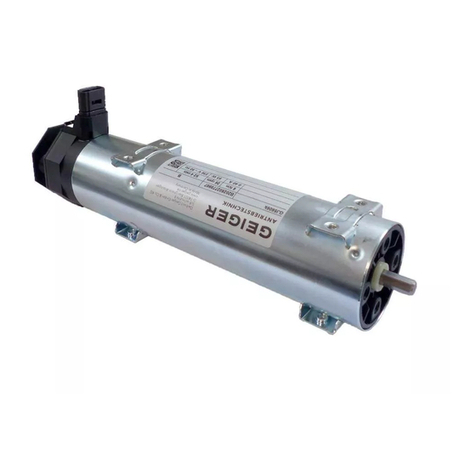
GEIGER
GEIGER SOLIDline GJ56 Series Original installation and operating instructions
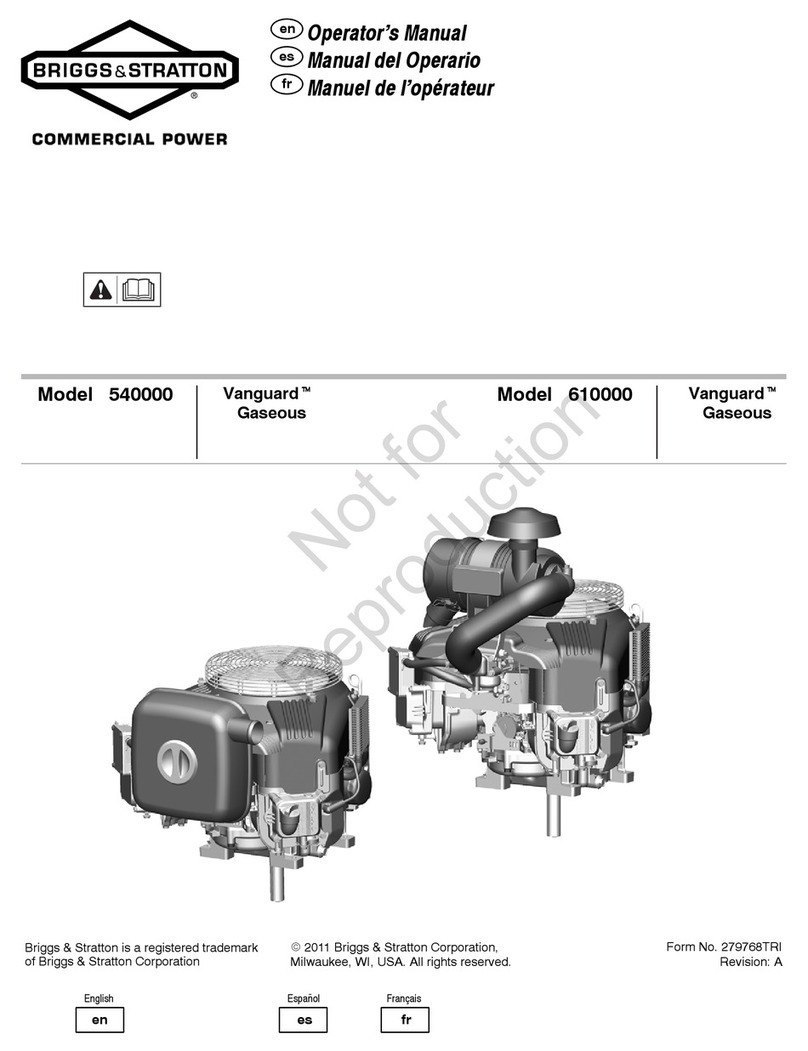
Briggs & Stratton
Briggs & Stratton Vanguard 540000 Series Operator's manual
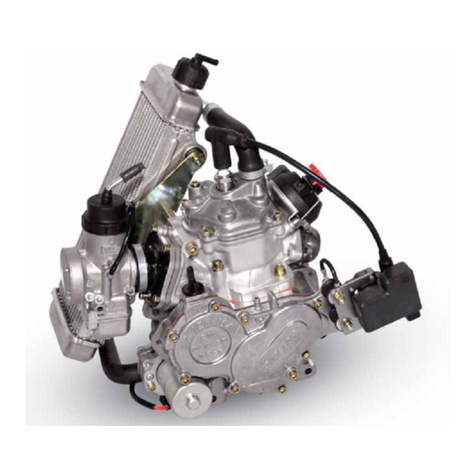
BRP
BRP ROTAX FR 125 MAX Repair manual
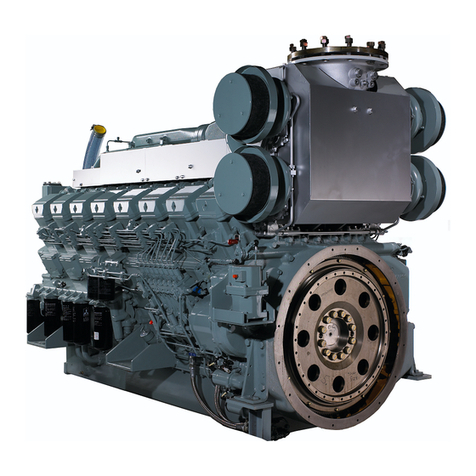
Mitsubishi
Mitsubishi S16R operating instructions
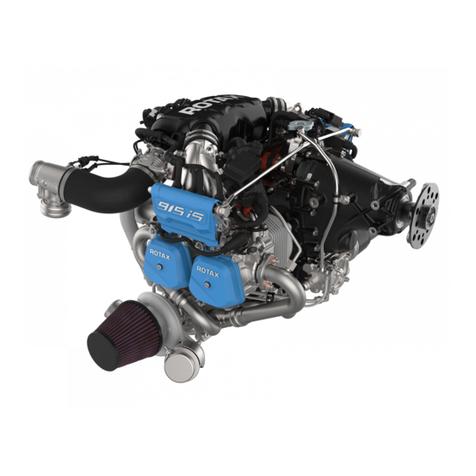
Rotax
Rotax 915 i A SERIES Operator's manual
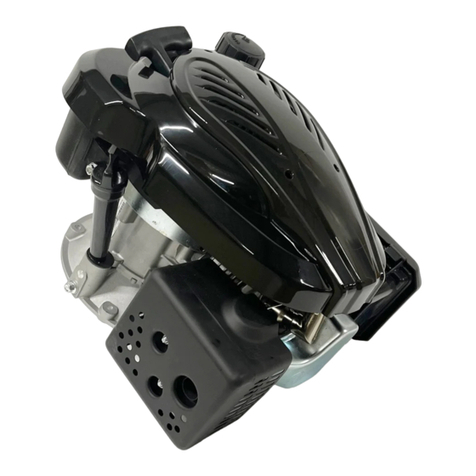
Ariens
Ariens AC Series Owner's/operator's manual
